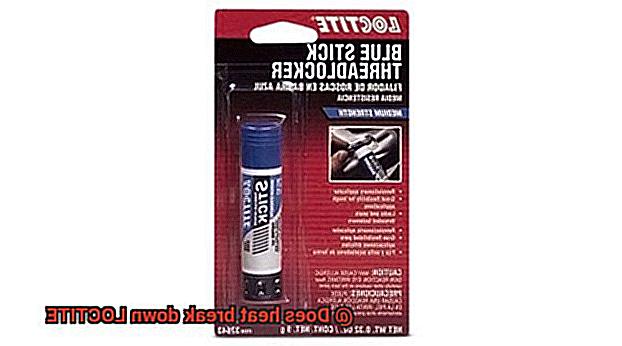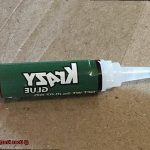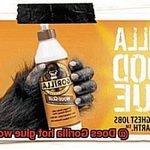LOCTITE, the adhesive superhero we all rely on for strength and durability. It’s like the Hulk of adhesives, holding things together with an iron grip. But what happens when things get hot? Can LOCTITE withstand the heat or does it crumble under pressure?
These are the burning questions (pun intended) that we’re here to answer. We’ll take a deep dive into the fiery world of temperature and its impact on LOCTITE adhesives. Brace yourself for some sizzling insights as we uncover whether heat has the power to break down these mighty bonds.
So grab your popcorn, because this is going to be one hot topic. Let’s explore the scorching relationship between heat and LOCTITE adhesives and see if they can handle the heat or if they need to get out of the kitchen.
The Temperature Limits of LOCTITE
Contents
- 1 The Temperature Limits of LOCTITE
- 2 Factors That Can Accelerate the Breakdown of LOCTITE Under Heat
- 3 High-Temperature Resistant Variants of LOCTITE
- 4 Understanding the Technical Data Sheet for Optimal Performance
- 5 Tips to Ensure Maximum Heat Resistance with LOCTITE
- 6 Common Applications Where Heat Resistance Is Necessary
- 7 Benefits of Using High-Temperature Resistant Variants of LOCTITE
- 8 Conclusion
Understanding the temperature limits of LOCTITE is key to ensuring optimal adhesive strength and durability in a wide array of applications. In this article, we will delve into the topic of LOCTITE’s temperature limits, exploring their impact on adhesive performance and providing valuable insights for users.

Temperature Limits and Their Significance:
LOCTITE adhesives are available in various formulations, each with its own specified temperature limits. These limits dictate the range of temperatures within which the adhesives can effectively perform. Exceeding these limits can result in decreased adhesive performance and even bond failure. It is important to note that specific LOCTITE products may have varying temperature limits due to their unique compositions.
Standard Temperature Range:
Most standard LOCTITE adhesives offer a broad temperature range of -40°C to 150°C (-40°F to 302°F). This versatility makes them suitable for a wide range of applications, from automotive repairs to household projects. However, it is crucial to refer to the manufacturer’s specifications for precise temperature limits for each product.
Specialized High-Temperature Resistant Formulations:
For applications requiring resistance to extreme heat, specialized LOCTITE adhesives are available. These high-temperature resistant formulations can withstand temperatures up to 260°C (500°F) or even higher. They find ideal use in industries such as aerospace, automotive, and industrial manufacturing, where exposure to elevated temperatures is common.
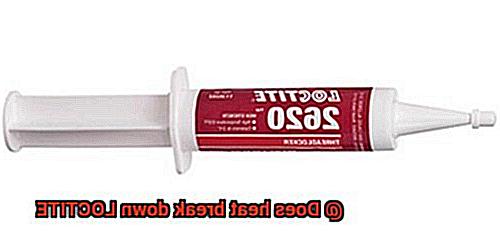
Considerations for Low-Temperature Applications:
While LOCTITE adhesives are renowned for their high-temperature resistance, it is equally important to consider low-temperature applications. Certain types of LOCTITE adhesives are specifically designed for cryogenic environments, where temperatures can plummet below -40°C (-40°F). These adhesives provide reliable bonding and sealing solutions in extreme cold conditions.
Factors Influencing LOCTITE Performance under Heat:
Apart from the temperature limits, several other factors can impact LOCTITE’s performance under heat. Prolonged exposure to high temperatures, intense heat, humidity, and chemicals in the environment can all influence the adhesive’s effectiveness. Hence, it is crucial to consider these factors and select the appropriate LOCTITE adhesive based on the specific application requirements.
Factors That Can Accelerate the Breakdown of LOCTITE Under Heat
In this discussion, we will explore the factors that can accelerate the breakdown of LOCTITE under heat. Whether you’re a DIY enthusiast or a professional, understanding these factors will help you make informed choices and ensure your projects stand the test of time. So let’s dive into the mysteries of LOCTITE breakdown under heat.
Temperature – Handle with Care:
Extreme heat is not LOCTITE’s best friend. Higher temperatures can speed up its deterioration process, causing this adhesive to lose its grip. Different types of LOCTITE have different temperature limits, so choose wisely based on your specific application.
Time is of the Essence:
The longer LOCTITE is exposed to heat, the higher the chances of it waving goodbye to its adhesive properties. Be mindful of how long your project is under the heat lamp to avoid overcooking your bond.
Chemical Composition – The Recipe Matters:
LOCTITE is a magical concoction, but not all ingredients are created equal in terms of heat resistance. Some components are more prone to degradation than others. Solvents or curing agents may bid adieu at high temperatures, leading to a breakdown in LOCTITE’s adhesive powers.
Substrate Selection – A Match Made in Heaven:
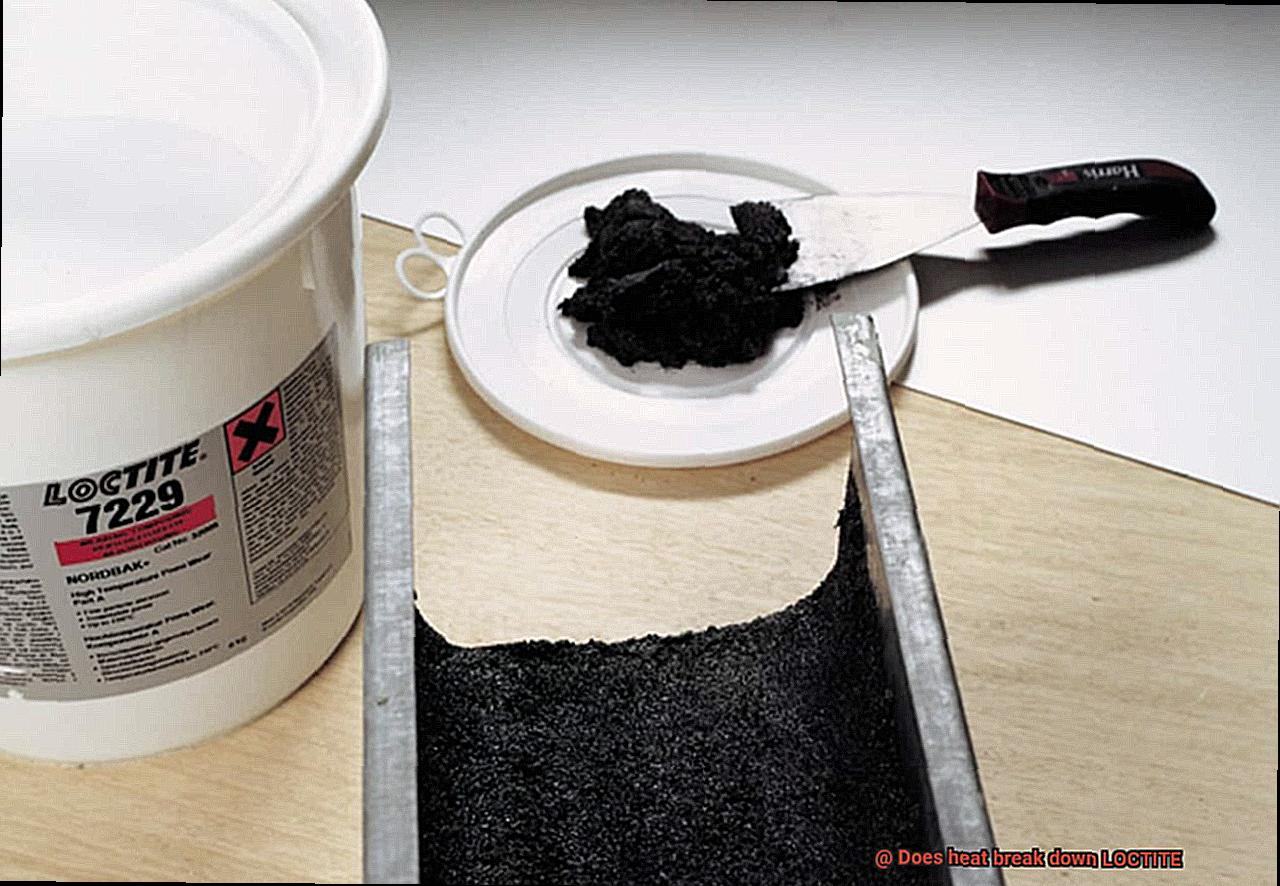
LOCTITE and substrates must be compatible like Romeo and Juliet. Different materials have different melting points and expansion coefficients. When exposed to heat, some substrates can expand or deform, adding stress to the LOCTITE bond and potentially causing failure. Choose your substrate wisely to prevent heartbreak.
Environmental Conditions – The Heat and Humidity Dance:
Besides temperature, environmental conditions play a role in LOCTITE breakdown. Humidity can disrupt the curing process, resulting in weak bond strength. Watch out for chemicals or contaminants in the environment that can team up with heat to accelerate LOCTITE’s demise.
High-Temperature Resistant Variants of LOCTITE
When it comes to glues that can withstand extreme heat, LOCTITE has you covered with their high-temperature resistant variants. These specialized adhesives are formulated with unique ingredients and additives that give them the power to stay strong even in scorching temperatures. Let’s take a closer look at what makes these LOCTITE variants so special.
First and foremost, these high-temperature resistant glues have a heat-defying formulation. LOCTITE has carefully crafted these variants to ensure they can handle extreme temperatures without losing their adhesive properties. From automotive engines to industrial ovens, these glues are built to withstand the heat.
Speaking of temperatures, these LOCTITE variants boast an impressive range. Depending on the specific product, they can handle temperatures ranging from 150°C (302°F) up to a sizzling 260°C (500°F). That’s some serious heat resistance.
The versatility of these high-temperature resistant variants is another standout feature. Whether you’re working on an exhaust system or repairing a furnace, LOCTITE has a variant that’s perfect for your project. No matter the application, if exposure to high temperatures is a concern, these glues have got you covered.
Durability and reliability are also key factors that set these LOCTITE variants apart. Not only do they withstand heat, but they also offer other desirable properties such as chemical resistance, resistance to vibration and impact, and overall durability. These glues are built to last.
LOCTITE understands that different applications have unique requirements, which is why they offer a variety of high-temperature resistant variants. From threadlockers to gasket sealants, retaining compounds to epoxy adhesives, LOCTITE has a product specifically formulated for every application.
When using these high-temperature resistant LOCTITE variants, it’s important to follow the manufacturer’s instructions carefully. Proper surface preparation and application techniques are crucial for optimal performance and safety.
Understanding the Technical Data Sheet for Optimal Performance
Whether you’re fixing an engine, building a BBQ grill, or working on a rocket ship, choosing the right adhesive that can withstand high temperatures is crucial. LOCTITE offers a range of high-temperature resistant glues, but how do you know if they’re up to the task? That’s where the Technical Data Sheet (TDS) comes in.
The TDS is like a secret weapon of adhesive knowledge. It’s a document that provides detailed information about the characteristics and performance of LOCTITE adhesive products. Think of it as a cheat sheet that tells you everything you need to know about the glue, including how it performs under different conditions. When it comes to heat exposure, the TDS is your best friend.
So, how can you use the TDS to understand optimal performance in applications involving heat exposure? Let’s break it down:
- Temperature Range: The TDS usually specifies the temperature range within which the adhesive can maintain its optimal performance. Look for this information under the “Service Temperature” or “Operating Temperature” section of the TDS. Different types of LOCTITE adhesives may have different temperature ranges, so make sure to check for the specific product you’re using.
- Thermal Stability: The TDS may also provide information about the adhesive’s thermal stability. This refers to its ability to withstand exposure to high temperatures without degradation. Knowing this can help you determine if a particular LOCTITE product is suitable for your application involving high heat environments.
- Curing and Post-Curing: The TDS may offer guidance on whether additional curing or post-curing is necessary to enhance the adhesive’s resistance to heat. Pay attention to these recommendations as they can significantly impact the adhesive’s performance.
- Consult the Experts: If you’re unsure about the adhesive’s performance under specific temperature conditions, don’t hesitate to consult with a technical expert or contact LOCTITE customer support. They’re there to help and can provide valuable insights and recommendations.
Tips to Ensure Maximum Heat Resistance with LOCTITE
LOCTITE is a popular brand of adhesive known for its strong bonding properties. However, when it comes to high temperatures, precautions need to be taken to ensure maximum heat resistance. In this blog post, we will discuss some tips and precautions to help you achieve reliable and long-lasting bonds with LOCTITE in high-temperature environments.
Select the Right LOCTITE Product:
Choosing the right type of LOCTITE for high-temperature applications is crucial. LOCTITE offers specialized products like the LOCTITE 648 Retaining Compound and the LOCTITE 518 Gasket Eliminator, specifically designed for heat resistance. These products are formulated to withstand elevated temperatures, providing a reliable bond even in extreme heat conditions.
When selecting a product, consider the maximum operating temperature of the application and choose a LOCTITE adhesive that can withstand that temperature range. It’s important to note that different products have different temperature limits, so ensure that the selected adhesive meets your requirements.
Proper Surface Preparation:
Before applying LOCTITE, it’s essential to clean and degrease the surfaces that will be bonded. Any dirt or contaminants on the surface can compromise the adhesive’s performance under high heat. Using a suitable cleaner or solvent recommended by LOCTITE ensures a clean surface for optimal bonding.
In addition to cleaning, roughening the surface can also improve adhesion. This can be done using sandpaper or other abrasive methods. The roughened surface provides more area for the adhesive to bond with, enhancing its strength and heat resistance.
Ensure a Tight Fit:
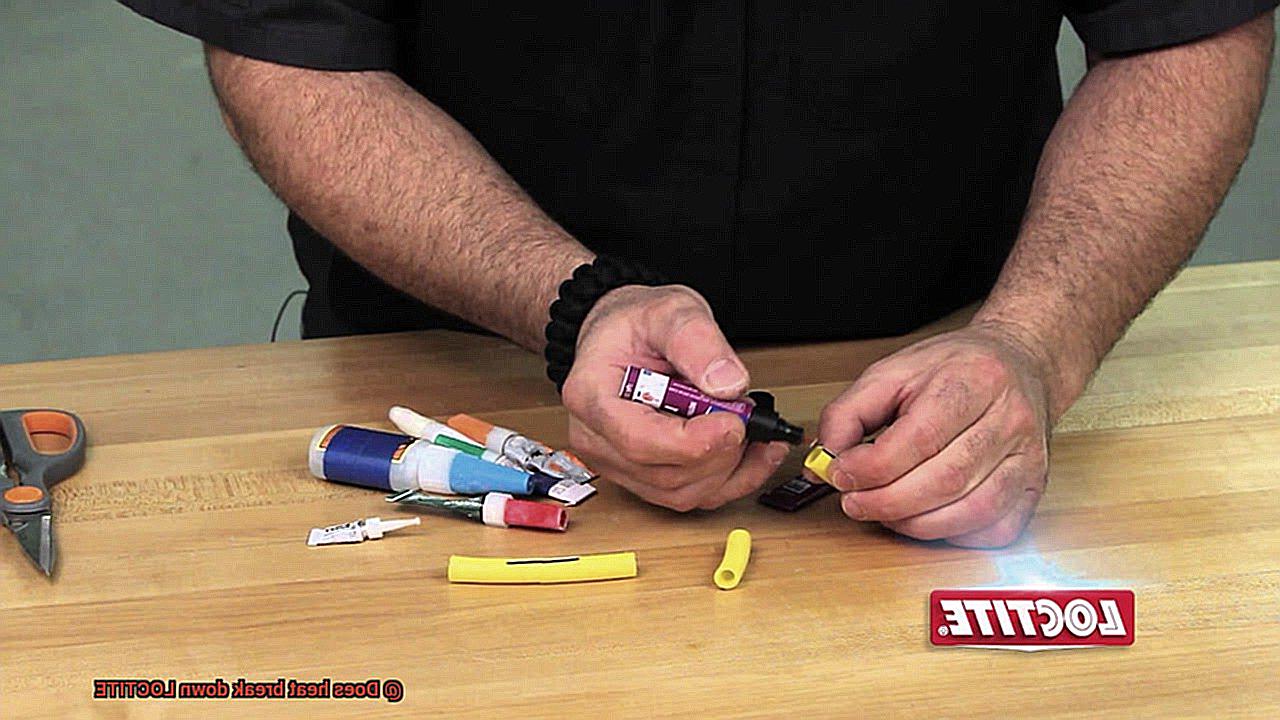
A tight fit between the components being bonded is crucial for maximum heat resistance. Gaps or loose fits create stress points that can weaken the bond when exposed to heat. Using clamps or other methods to hold the parts together during curing ensures a strong and secure bond.
Additionally, consider using LOCTITE’s gap-filling adhesives for applications with larger gaps or uneven surfaces. These adhesives can fill and bond irregularities, providing a strong and durable bond even in high-temperature environments.
Follow Curing Instructions:
Curing time and temperature play a significant role in achieving maximum heat resistance with LOCTITE. Following the manufacturer’s instructions regarding curing temperature and time is crucial for optimal performance. Rushing the curing process or exposing the bonded parts to excessive heat before complete curing can compromise the bond’s strength.
To ensure proper curing, it is important to provide adequate time and temperature for the adhesive to fully cure. This may require the use of ovens or other heating methods to maintain the desired temperature during the curing process. Monitoring the temperature and following the recommended curing time will help achieve maximum heat resistance.
Common Applications Where Heat Resistance Is Necessary
In the world of adhesives, one brand stands out for its exceptional heat resistance capabilities – LOCTITE. Whether you’re in the automotive, aerospace, electronics, or construction industry, heat-resistant adhesives are a game-changer, ensuring durability and reliability even in the face of scorching temperatures. In this blog post, we’ll explore the common applications where heat resistance is necessary and uncover the secret behind LOCTITE’s unbreakable bonds in extreme heat.
Automotive Industry:

Under the hood of a car, temperatures can reach extreme levels. LOCTITE adhesives are used to bond components such as gaskets, seals, and sensors, ensuring they remain securely in place even under high temperatures. From engine blocks to exhaust systems, LOCTITE keeps everything running smoothly.
Aerospace Industry:
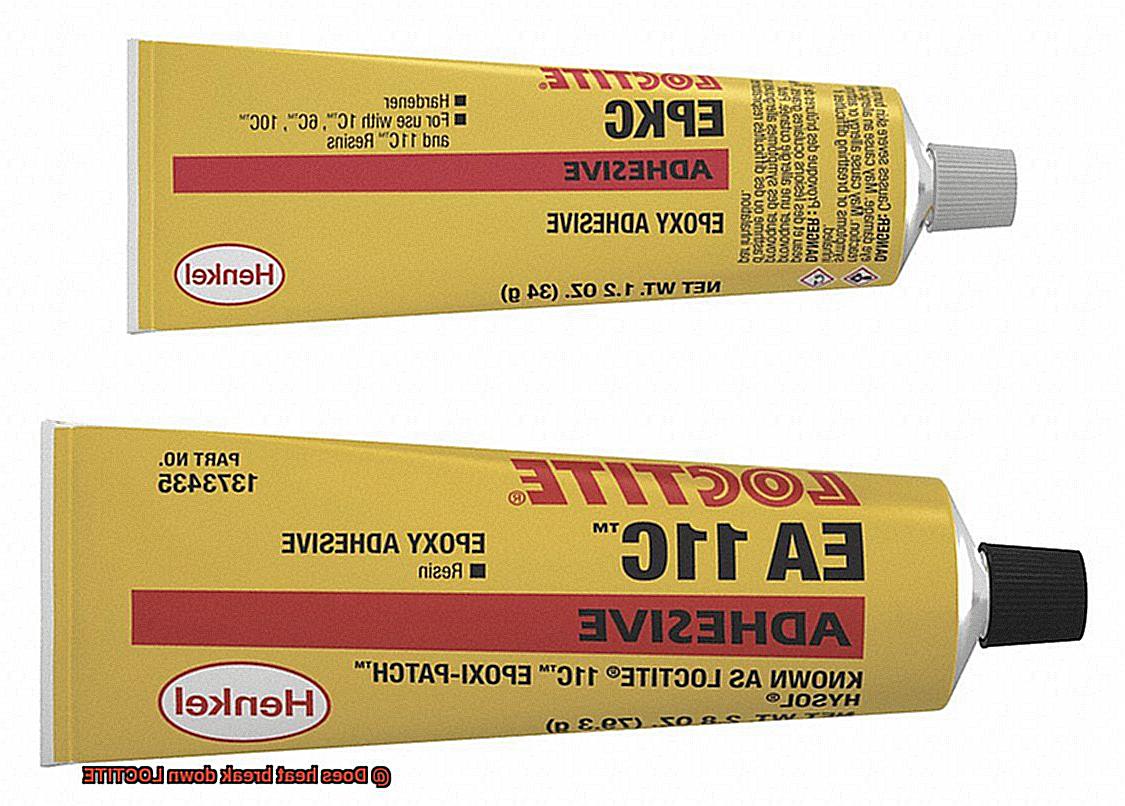
Aircraft engines generate enormous amounts of heat, and components within the engine need to withstand these extreme conditions. LOCTITE adhesives are used to bond turbine blades, combustion chambers, and critical components, ensuring optimal performance and safety in flight.
Electronics Industry:
In electronic devices, heat is often generated during operation, which can degrade adhesives over time. LOCTITE offers specialized adhesives designed for electronics applications that provide excellent heat resistance. From smartphones to computer circuit boards, LOCTITE ensures longevity and reliability.
Industrial Ovens and Furnaces:
Manufacturing industrial ovens and furnaces requires adhesive solutions that can withstand extremely high temperatures without degradation or failure. LOCTITE provides exceptional heat resistance, ensuring the integrity and longevity of these heating appliances.
Construction Industry:
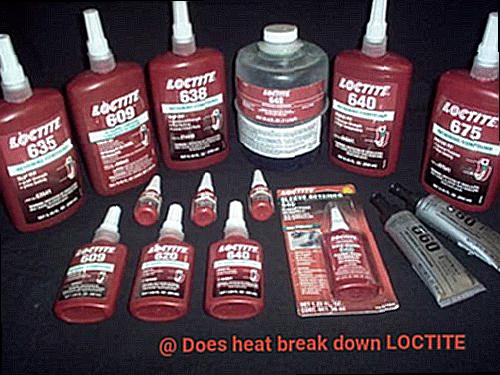
In high-temperature environments such as fireproofing materials and sealing joints, heat-resistant adhesives are crucial. LOCTITE offers specialized products that can handle extreme temperatures, providing reliable performance in demanding construction applications.
Cookware Manufacturing:
In the world of cookware, heat resistance is paramount. LOCTITE adhesives are used to bond handles, knobs, and other components, ensuring durability and safety even at high cooking temperatures.
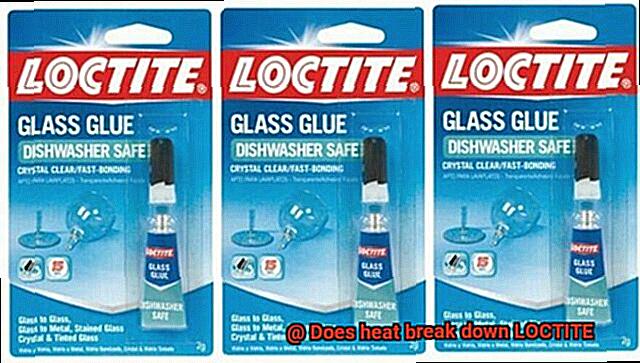
Glass Industry:
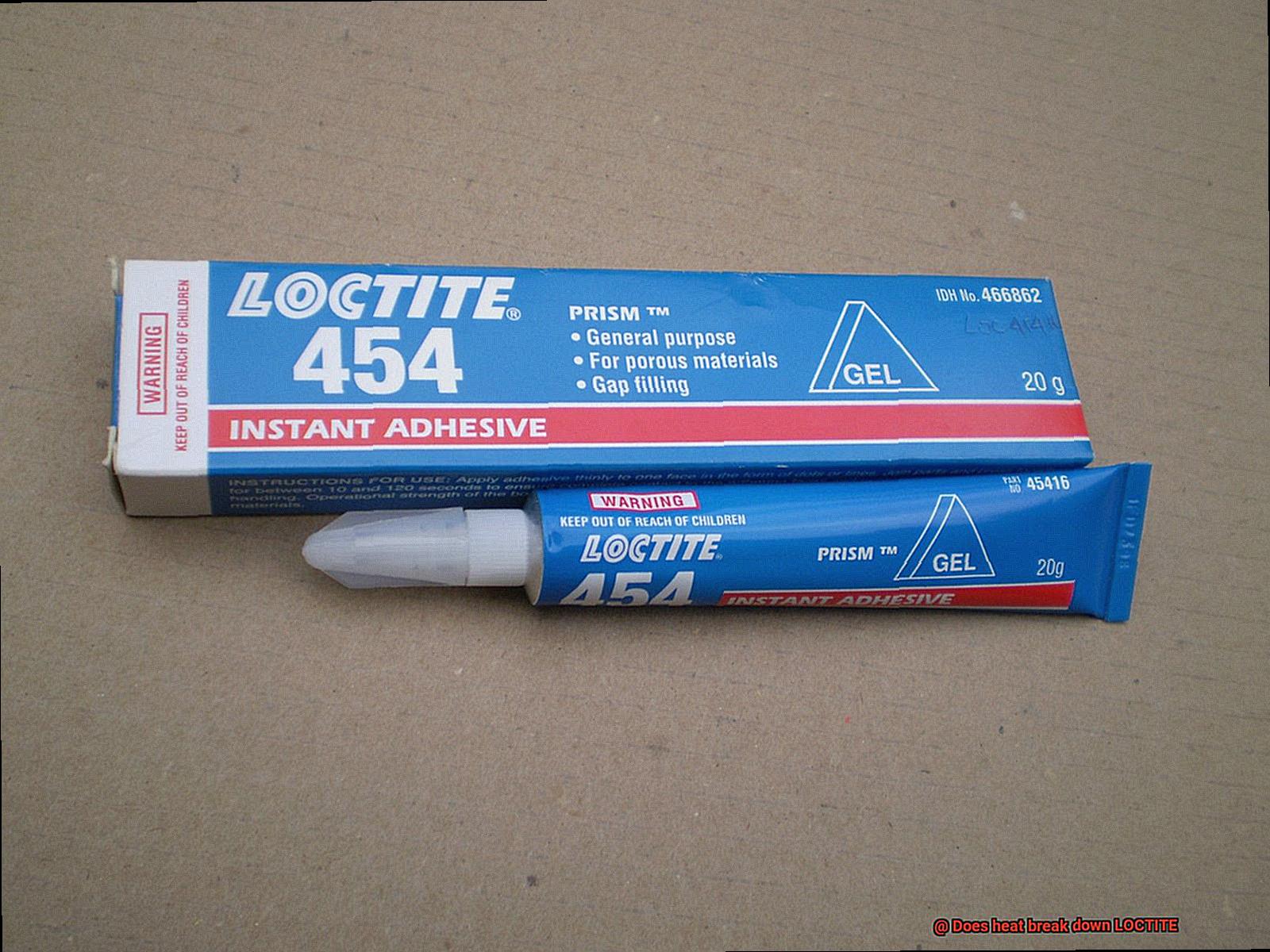
The glass industry relies on heat-resistant adhesives to bond glass components, such as windows and mirrors. LOCTITE adhesives provide excellent heat resistance, ensuring a strong and long-lasting bond.
Power Generation Plants:
Power generation plants operate at elevated temperatures, requiring adhesives that can withstand the heat. LOCTITE offers heat-resistant adhesives that ensure reliable performance in power plant equipment, from turbines to boilers.
Benefits of Using High-Temperature Resistant Variants of LOCTITE
Look no further. We have the perfect solution – high-temperature resistant variants of LOCTITE. These super adhesives are designed to withstand scorching temperatures, making them the top choice for industries where heat resistance is crucial.
So, what sets these high-temperature resistant variants of LOCTITE apart? Let’s dive into the benefits and discover why they’re a game-changer.
First and foremost, these variants can handle temperatures from 200 to 650 degrees Celsius. They fearlessly endure extreme heat without breaking a sweat (or bond). From automotive and aerospace to electronics and manufacturing, these adhesives won’t let you down when the temperature rises.
But it’s not just about surviving the heat – it’s about thriving in it. Regular adhesives often lose their effectiveness when exposed to high temperatures, leading to weakened bonds and failures. With high-temperature resistant variants of LOCTITE, those worries vanish. These adhesives resist thermal degradation, ensuring long-lasting and reliable bonds even in blistering heat.
And that’s not all. Using high-temperature resistant variants of LOCTITE also boosts productivity and efficiency. They cure faster than traditional alternatives, meaning less waiting for your bonds to set. This translates to increased throughput and greater overall efficiency in your manufacturing processes.
Chemical resistance is another standout feature. These adhesives withstand exposure to various chemicals, fuels, oils, and solvents without losing their bonding capabilities. So even in the harshest environments, these adhesives stand strong.
Versatility is also a key advantage. High-temperature resistant variants of LOCTITE can be used on a wide range of substrates – metals, plastics, ceramics, composites – making them a valuable solution for diverse applications across industries.
To top it all off, these variants come in different formulations – anaerobic adhesives, epoxy adhesives, silicone sealants – allowing you to choose the perfect product for your needs and application conditions.
td73Ocindz0″ >
Conclusion
In conclusion, heat has the potential to break down LOCTITE adhesives, but the extent of this breakdown depends on various factors. These factors include the specific formulation of the adhesive, its temperature limits, and the surrounding environmental conditions.
Standard LOCTITE adhesives typically have a temperature range of -40°C to 150°C (-40°F to 302°F), making them suitable for a wide range of applications. However, when it comes to extreme heat resistance, specialized high-temperature resistant formulations are available. These formulations can withstand temperatures up to 260°C (500°F) or even higher.
Factors such as prolonged exposure to high temperatures, intense heat, humidity, and chemicals in the environment can speed up the breakdown process of LOCTITE under heat. It is crucial to consider these factors and choose the appropriate LOCTITE adhesive based on your specific application requirements.
To ensure maximum heat resistance with LOCTITE adhesives, there are several steps you can take. First, select the right product for high-temperature applications. Second, properly prepare the surfaces being bonded and ensure a tight fit between components. Third, follow curing instructions carefully. And finally, don’t hesitate to consult technical experts or reach out to LOCTITE customer support if needed.
High-temperature resistant variants of LOCTITE offer numerous benefits. They can withstand extreme temperatures without degradation or failure and resist thermal degradation. Additionally, they cure faster than traditional alternatives and provide chemical resistance. With versatility in terms of substrate compatibility and formulation options, these variants are ideal for industries where heat resistance is crucial – such as automotive, aerospace, electronics, construction, glass manufacturing, power generation plants, and cookware manufacturing.

